| Outcome of the Chinese Pilot Studies on WH+ST (2017-18) |
| Author:Li Hong WHITRAP SHANGHAI PublishDate:2019-05-15 Hits:2988 |
| Research Background In 2018, the total number of global tourists reached 12.1 billion. Tourism is a major source of economic growth, employment and income for many countries, particularly developing countries. It can contribute directly or indirectly to the achievement of all Sustainable Development Goals (SDGs), and in particular to SDG 8 “promoting sustained, inclusive and sustainable economic growth, full and productive employment and decent work for all”, SDG 12 “ensuring sustainable consumption and production “, and SDG 14 “conserving and sustainably using the oceans, seas and marine resources for sustainable development”. World Heritage Sites are likely the most popular tourist destinations. If properly utilized, tourism can become the driving force for the protection of World Heritage Sites. However, there are many issues to consider to reach a balance between heritage protection and tourism development. In 2012, at the 36th World Heritage Committee, the UNESCO World Heritage Committee formally adopted the World Heritage and Sustainable Tourism Project (WH+ST) coordinated by the World Heritage Centre. China’s experience in the management and development of world heritages is of global relevance for the implementation of WH+ST programme as it is probably the most complex case in terms of complexity of social components, economic and environmental situation, and development pressure. In recent years, China's rapid economic development has made the tourism market prosperous. China's huge population has made China the world's largest tourist “exporter”. At the same time, China has 53 World Heritage sites, the second most represented country on the World Heritage List. World Heritage Sites are deeply loved by Chinese tourists at home and abroad, and the number of visitors to these properties continues to grow. Most of China's world heritage sites are inhabited by indigenous peoples. the unique social and cultural specificities of Chinese ethnic minorities generate a complex relationship with the new economic models and pressures produced by tourism on the sites and their environment, and poses new challenges for the proper management of World Heritage Sites that are relevant at the global scale. To analyse these issues, in 2015 the UNESCO World Heritage Centre asked WHITRAP to conduct a study on pilot World Heritage sites in China to provide a global demonstration of the implementation of the UNESCO Programme on World Heritage and Sustainable Tourism (WH+ST) in China. This project, implemented by a team of researchers of Tongji University, is directed by Professor Han Feng, and coordinated by Li Hong, Programme Specialist at WHITRAP Shanghai. After a period of six months of analysis and screening, in April 2017 a two-year cooperation agreement was signed with two pilot units: the World Natural Heritage "Wuling Source Scenic and Historic Interest Area", and the World Cultural Heritage "Tusi Site (Hailongtun, Guizhou )". These two World Heritage properties were selected for the following reasons: Wulingyuan: (1) From the perspective of World Heritage, the development of Wulingyuan after its inscription on the World Heritage List has raised the UNESCO World Heritage Committee concern. The State of Conservation Reports submitted in 1998, 2015 and 2019 require local governments to pay attention to, and balance, the conflict between the tourism development of the site on the one side, and the protection of the Outstanding Universal Value (OUV) on the other side; (2) From the perspective of heritage categories, Wulingyuan was listed as a Natural World Heritage List in 1992,.within the earliest group of natural heritage sites listed in the World Heritage List in China. (3) From the perspective of tourism development, since the 1970s, tourism industry has been the economic pillar of Wulingyuan District and of the nearby Zhangjiajie City, and it is the main source of income for local residents. Hailongtun: (1) From the perspective of World Heritage, the World Heritage Committee has called on heritage sites to strengthen their management systems and the implementation of management plans in order to ensure, on the whole, that tourism projects do not have a negative impact on highlighting universal values; (2) From the perspective of heritage categories, the Tusi site was inscribed in the World Heritage List in 2015 when China's overall development in heritage protection and management is more mature and more advanced in technology compared with the early World Heritage sites. (3) From the perspective of tourism development, currently the tourism viewing and experience of this property is unsatisfactory, and the number of tourists, and the income they generate, is relatively small compared to other heritage sites. Research Design According to the WH+ST action plan, based on the problem orientation, this study divided into five sections: "OUV Basic Research of World Heritage Sites", "Cognition of OUV by World Heritage Stakeholders", "Protection and Management of OUV of World Heritage Sites ", "Operation and Management of World Heritage sites as tourist destinations ", and " Community Engagement in OUV protection and tourism development of World Heritage Site. " The research is divided into two stages. The first stage is an international and domestic comparison; the second stage is the analysis of the current situation of World Heritage Sites. The research method applied in the fisrt stage is mainly based on literature review and on-site investigation. Stage One is also divided into two approaches: a comprehensive understanding of the "World Heritage and Sustainable Tourism" programme. Including a review of the five objectives of WH+ST, the Action Plan of the UNESCO’s World Heritage and Sustainable Tourism Programme, the World Heritage and Sustainable Tourism Toolkit, “Sustainable Tourism Capacity Building” Project carried out in Africa, pilot sites in Nordic-Baltic region, and Community-based Management and Sustainable Tourism And a review of World Heritage application documents, outstanding universal values, value carriers, integrity, authenticity, protection and management, the evaluation of the World Heritage Advisory Body, the status report on protection, and the resolutions of the UNESCO World Heritage Committee. The differences and commonalities between the value identified by the World Heritage Committee and the present value identified by China are determined by field survey and analysis. Stage Two research method is based on literature review, on-site investigation, in-depth interviews, and questionnaires, and this stage is divided into four approaches: 1. Identifying the four major stakeholders closely related to heritage protection and tourism development, namely administrators, residents, tourism practitioners and tourists; and analyzing the deviation of OUV protection caused by cognitive differences though the analysis of the four major stakeholders' cognition of heritage value, protection, community culture and relevant acquisition channels. 2. From the perspective of management, the research makes a comparative analysis of the existing institutional setup, management system, and heritage management planning on the one side, and the status quo of other relevant national planning in Chinese heritage sites on the other, in order to point out the conflicts between the existing management system and management planning, and the implementation of protection and management of OUV. 3. To analyze the conflicts caused by tourism development on OUV. the research, based on the current status of tourism development, analyzes the interpretation and dissemination of the concept of heritage OUV in tourism activities, the combination of tourism products and heritage value, tourism operation and management, and the investment of tourism income in heritage protection. 4. Finally, from the perspective of the community, the research assesses the spatial distribution of the community in the heritage site, the approaches and means of the community for OUV protection, the degree and effect of the community engagement in tourism activities, and the conflict between the community engagement in tourism development and OUV preservation.
Research Outcome 4. Encourage community engagement and promote the protection and dissemination of OUV. Respect the traditional culture and cultural diversity of local communities, optimize the spatial layout of the community, create an effective communication platform, and promote community engagement in OUV protection and tourism development. 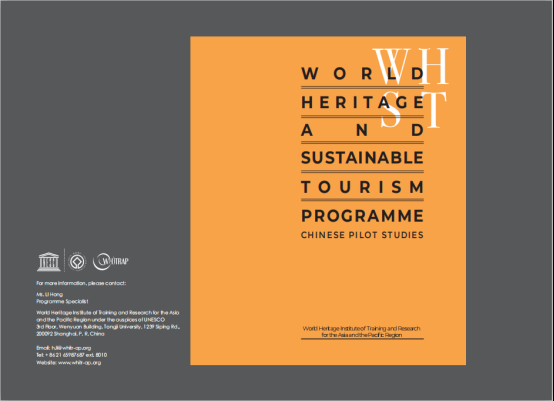 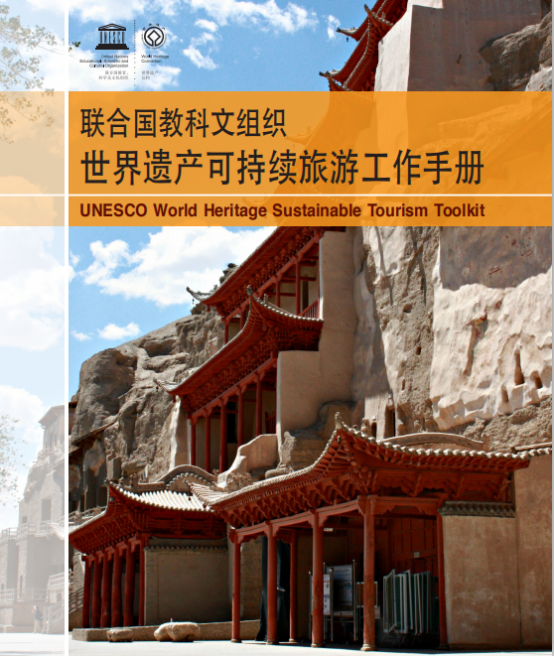 WH+ST Brochure/Toollit
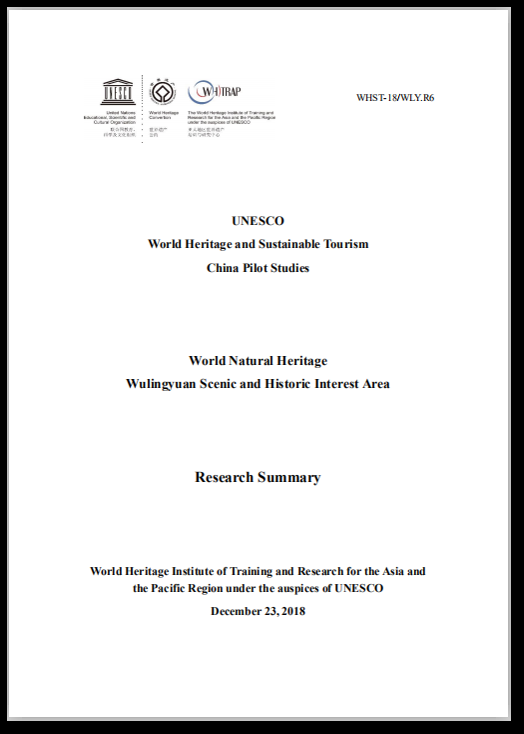 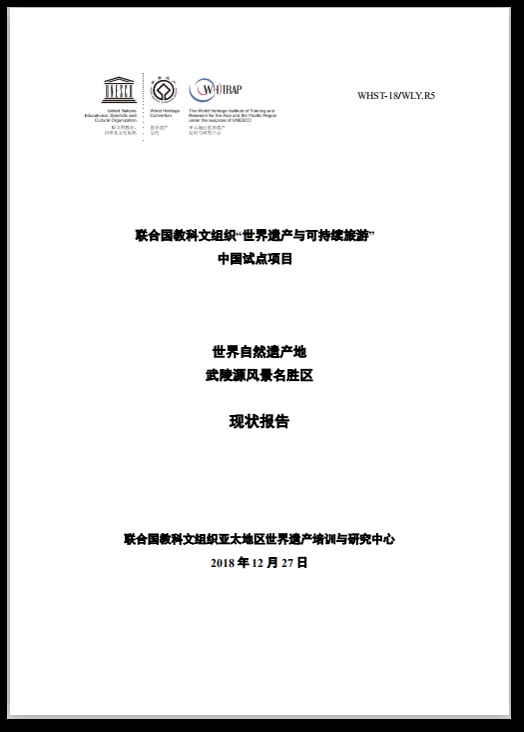 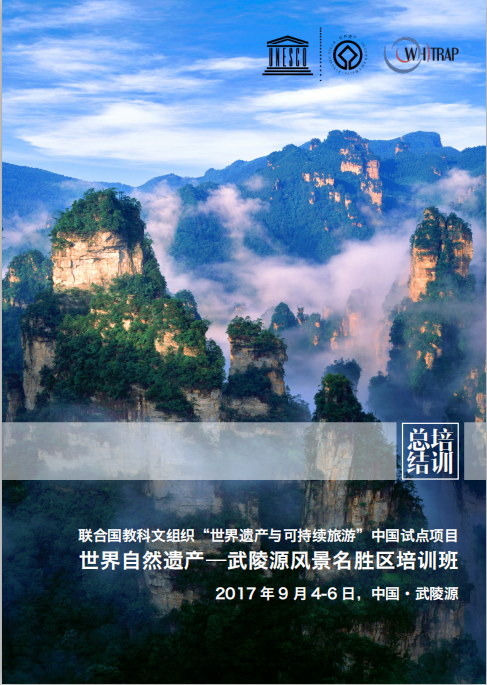 World Natural Heritage-Wulingyuan Scenic and Historic Interest Area Research summary/Status Report/Training Summary
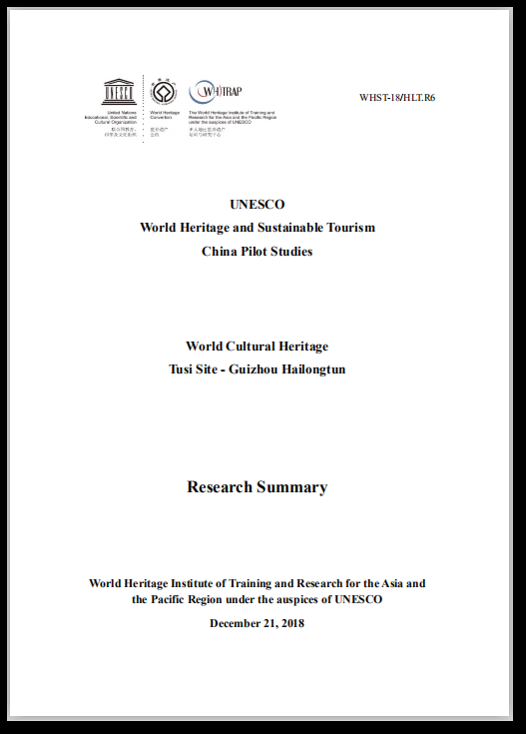 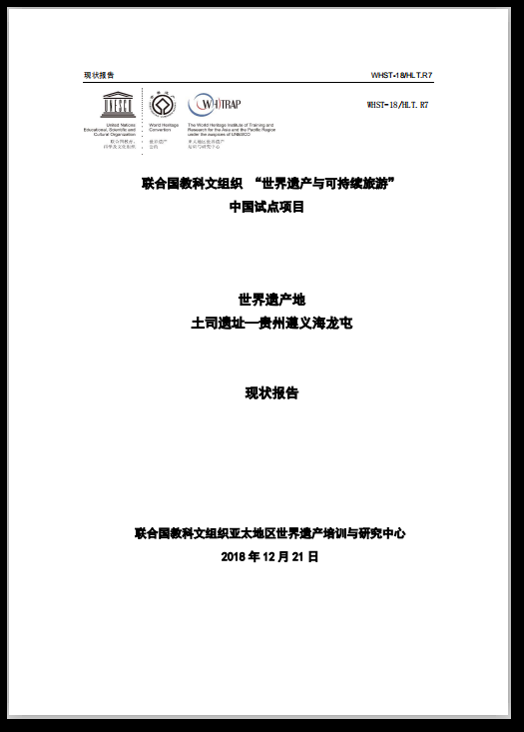 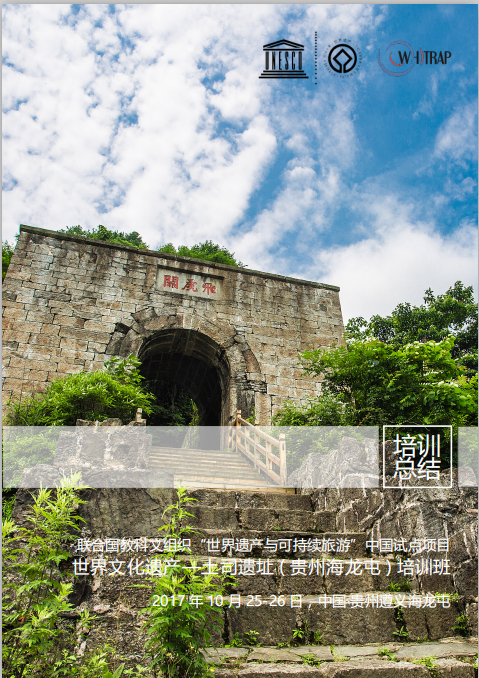 World Cultural Heritage-Tusi Site-Guizhou Hailongtun Research summary/Status Report/Training Summary
|
- News | WHITRAP Shanghai and CNR-ISPC bilateral meeting
- News | WHITRAP meets Cité de l’Architecture et du Patrimoine
- WHITRAP Hosting "Workshop on Preliminary Assessment for National Focal Points of the Asia Region" in Chengdu
- WHITRAP Shanghai meets UNESCO
- INTERNATIONAL CONFERENCE PRELIMINARY ANNOUNCEMENT & CALL FOR PAPERS
- Observation of the 46th Session of the World Heritage Committee
Copyright © 2009-2012 World Heritage Institute of Training and Research-Asia and Pacific (shanghai)


